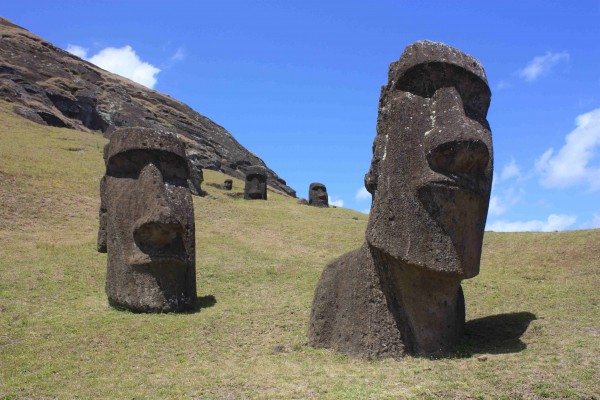Scientists Finally Unlock the Mystery of the Easter Island Extinction
| Ana Verayo | | Jan 12, 2015 07:00 AM EST |
(Photo : Wikimedia) Ancient Polynesians from Easter Island had significant contact with native South Americans before the Europeans did.
New research reveals the mystery behind how ancient Polynesians on Easter Island disappeared off the face of the planet.
Over the decades, scientists have argued that the indigenous people Easter Island called the Rapa Nui were wiped out after they exhausted all the natural resources on their small island measuring only 63 square miles.
Like Us on Facebook
Some also say that disease or some sort of pestilence brought by European colonizers in the early 18th century led to the demise of the native population., Many of Rapa Nui were captured and sold as slaves.
This new study, however, suggests that existing environmental factors caused the ultimate downfall of the Rapa Nui people as opposed to internal or external forces.
Researchers said the natives probably suffered the consequences of extreme environmental changes over a span of centuries rather than a sudden collapse of natural resources or an epidemic that killed most of the population.
According to study co-author Thegn Ladefoged, an anthropologist from the University of Auckland in New Zealand, the results of the study were a surprise as there was little evidence that pre-European contact caused Rapa Nui society to collapse.
While analyzing the obsidian weapons and tools at different sites on the island, researchers discovered that natives shifted their use of the tools in different locations according to the natural resources available. This suggests the natives were attempting to adapt to the changing environmental conditions.
Even if Easter Island is a relatively small island, varying climates around the different parts of the island led to an uneven decline in human populations. One site could have been prone to drought while other sites had a wetter climate but infertile soil. The last site was where the Rapa Nui stayed the longest was both rainy and possessed healthy soil.
This study concludes that environmental barriers including extreme climate caused the death of the islanders rather than a decline in natural resources since this event occurred before Europeans came along.
This study was published in the Proceedings of the National Academy of Sciences.
TagsScientists Finally Unlock the Mystery of Easter Island Collapse, Easter Island, Rapa Nui, Chile, easter island rapa nui ancient polynesians died out extinction collapse
©2015 Chinatopix All rights reserved. Do not reproduce without permission
EDITOR'S PICKS
-

Did the Trump administration just announce plans for a trade war with ‘hostile’ China and Russia?
-

US Senate passes Taiwan travel bill slammed by China
-

As Yan Sihong’s family grieves, here are other Chinese students who went missing abroad. Some have never been found
-

Beijing blasts Western critics who ‘smear China’ with the term sharp power
-

China Envoy Seeks to Defuse Tensions With U.S. as a Trade War Brews
-

Singapore's Deputy PM Provides Bitcoin Vote of Confidence Amid China's Blanket Bans
-

China warns investors over risks in overseas virtual currency trading
-

Chinese government most trustworthy: survey
-

Kashima Antlers On Course For Back-To-Back Titles
MOST POPULAR
LATEST NEWS
Zhou Yongkang: China's Former Security Chief Sentenced to Life in Prison

China's former Chief of the Ministry of Public Security, Zhou Yongkang, has been given a life sentence after he was found guilty of abusing his office, bribery and deliberately ... Full Article
TRENDING STORY

China Pork Prices Expected to Stabilize As The Supplies Recover

Elephone P9000 Smartphone is now on Sale on Amazon India

There's a Big Chance Cliffhangers Won't Still Be Resolved When Grey's Anatomy Season 13 Returns

Supreme Court Ruled on Samsung vs Apple Dispute for Patent Infringement

Microsoft Surface Pro 5 Rumors and Release Date: What is the Latest?










